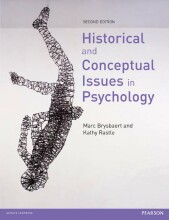CTT, DeVellis 2006
7 important questions on CTT, DeVellis 2006
What drives up de chronbach's alpha?
- The amount of items in a scale/test; this increases k/k-1 closer to 1
- the correlation/covariance between items; this increases test variance without increasing item variance.
Hat is the dependability coefficient?
- Instead of the reliability, generalizability theory has the dependability coefficient
- the dependability coefficient is the ratio between variance that is attributable to the person effect; differences in ability/attribute and the total variance.
- this describes the extend to which total variance is due to person effects and not due to other facets.
What is the generalizability coefficient?
......
- Higher grades + faster learning
- Never study anything twice
- 100% sure, 100% understanding
What are g studies and d studies?
a d-study is a study that takes this variance decomposition and modifies the test to get a more desirable variance decomposition.
How can the main effects of variance decomposition be interpreted?
How can the interaction effects be interpreted in variance decomposition?
- Variance due to differences in item difficulty for individuals with different abilities
- variance due to differences in rater leniency for individuals with higher or lower abilities
- variance due to differences rater leniency for more or less difficult items
How can you interpret cronbach's alpha and what can you do with it?
- If cronbach's alpha is .6, This means that at least 60% of the variance in true scores can be linearly predicted from the observed scores.
- from cronbach's alpha the sem of the test scores can be calculated.
- this sem can be used as a standard deviation of test scores to calculate a 95% ci around the test scores via: test score - 1.96*sem | test score + 1.96*sem
The question on the page originate from the summary of the following study material:
- A unique study and practice tool
- Never study anything twice again
- Get the grades you hope for
- 100% sure, 100% understanding
































